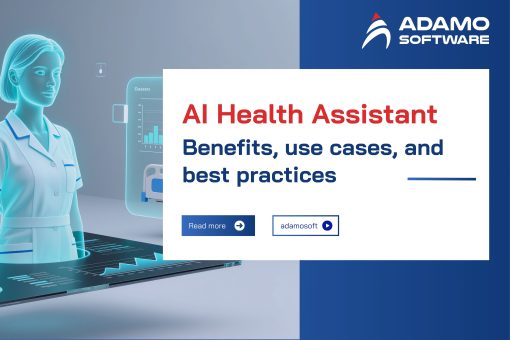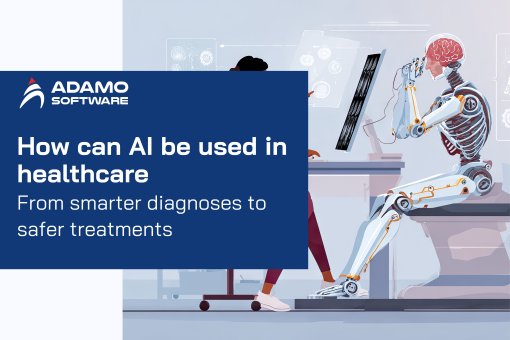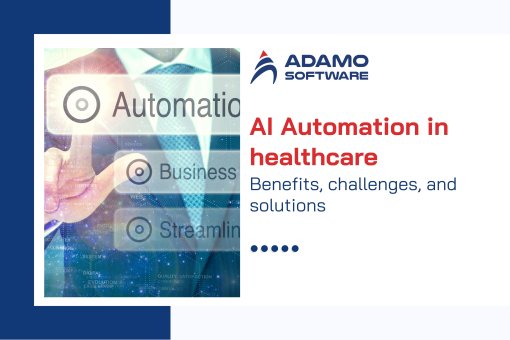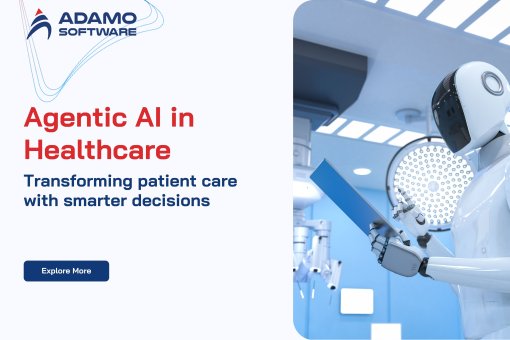Top Benefits of Big Data in Healthcare for Patients and Providers
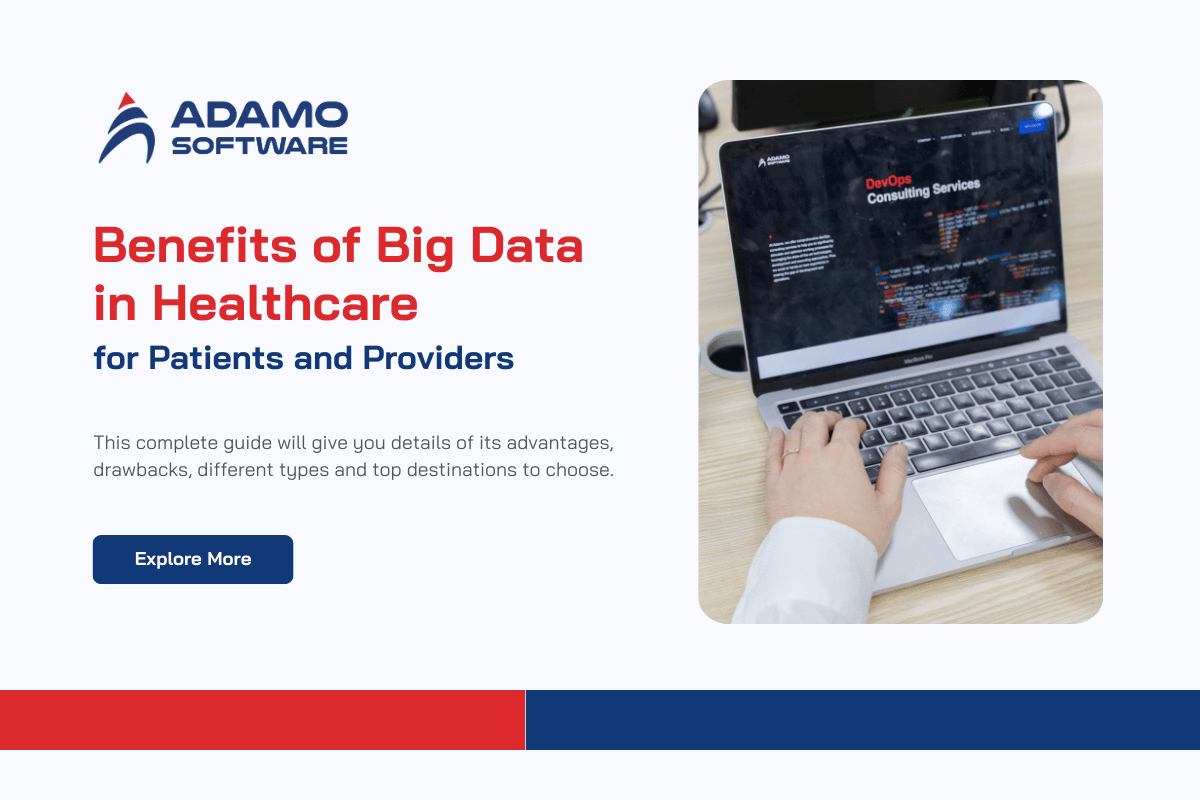
Currently, big data has significantly impacted many industries in the economy, changing how data is managed, analyzed, and leveraged. Healthcare is one of the most notable fields where data analytics is making major changes. In this area, big data includes patient information, and medical records collected and stored by computers and cloud data warehouses. So, why is big data important in the healthcare sector?
Let’s find the top benefits of big data in healthcare for patients and providers with Adamo Software to know the answer.
You will have an overall picture of big data analytics and applications of big data in healthcare work through this blog post. Besides, the post also shows figures, examples, and benefits of big data in the healthcare industry. Read our post for more detailed, well-researched, and up-to-date information.
I. What is Big Data Analytics?
Before delving into the benefits of big data in healthcare, it is necessary to know what big data and big data analytics are. Big data is the combination of complex structured (Excel sheets), semi-structured (webpages), and unstructured data (images, videos, audio files) that continues to grow over time. It is so large that businesses cannot use traditional data storage, processing, and analysis platforms to process information.
Big data has three main characteristics. They are volume of the data, velocity – data processing speed, and variety – different types and forms of data. Complex data plays an essential role in businesses, especially in today’s digital age with its ability to collect, store, and process large. Companies use big data in their systems to improve operations, provide better customer service, create marketing campaigns, etc. Thanks to that, they can increase their revenue and profit.
As the volume of information is increasing daily with a faster development pace, big data analytics has become more essential. Big data analytics refers to the complex process of examining huge data sets to discover information like correlations, market trends, and customer preferences. Thanks to that, organizations can make informed and wise business decisions. Collecting, processing, scrubbing, and analyzing big data analytics helps to gain insights and predict future outcomes of business works.
Besides banking and financing, education, and transportation, big data is widely used in the healthcare industry. The benefits of big data in healthcare for patients and providers are undeniable. Thanks to big data, medical care facilities can cut costs, minimize errors, monitor patient conditions, etc. In contrast, patients can be guaranteed the best care services, save time, and receive early diagnosis. Continue reading our post for more detailed information.
You can also explore about What is Health Data Management? Benefits, Challenges and HDM Software here.
II. Big Data Analytics in Healthcare Statistics
An estimated 2.5 exabytes of healthcare data will be produced globally each year by 2025. This number is predicted to grow over 35 times, reaching a staggering 75 exabytes generated annually around the world. Already, 41% of healthcare professionals have started implementing big data.
The metaverse, which integrates a large number of health records operational analytics, is believed to have a positive impact on the healthcare industry. The figure proves that the use of big data in healthcare is gradually becoming more popular and more accessible.
As clinical data has experienced exponential growth, big data analytics is essential for classifying and managing data. Straits Research predicts that big data solutions for health management will be a major market, reaching $105.73 billion by 2031. To manage this data effectively and improve patient care, the healthcare industry needs better administration and data optimization.
Overall, the significant growth of clinical data has emphasized the necessity of big data analytics in healthcare. The benefits of big data in healthcare will be discussed in more detail in the following sections, showing how it is changing the healthcare landscape.
III. How Big Data in Healthcare Works
Big data analytics includes four main steps. They are collecting data, processing data, data cleaning, and analyzing and interpreting data. How big data works in the healthcare sector also includes the same four steps. By completing these four steps, the benefits of big data in healthcare for patients and providers can be guaranteed. Let’s see how big data works in each step.

1. Collecting Data
The healthcare industry’s data can be structured data like numbers and code, semi-structured data like the healthcare facilities’ websites, and unstructured data like doctor’s notes, ultrasound, and X-ray images. Collecting data is the first step in leveraging big data analytics, which is also the beginning of the benefits of big data in healthcare. The information about the patient’s health, and the system’s performance will be collected from different sources.
Below are some key sources for data collection.
– Public health data on diseases, vaccinations, illness tracking, and health status across the world
– Clinical trials that provide information on how patients respond to new treatments, medicine, etc.
– Official reports from the hospital, the World Health Organization, etc.
– X-rays, CT scans, MRI images
– Electronic Health Records
Overall, data collection is an important part of the big data working process in healthcare. The benefits of big data in healthcare can be realized through this step, allowing healthcare providers to improve their service.
2. Processing Data
Once the information is collected and stored, it needs to be processed to transform raw data into meaningful insights. Effective data processing will bring many benefits of big data in healthcare. Let’s see what we can do in this step.
– Converting data into a standard format
When you collect a complete data set, you may want to organize them and convert them into a standard format. This helps to minimize inconsistencies and enhance data quality.
– Unifying healthcare data for insights
Information from different sources like electronic health records and genetic databases will be combined for a comprehensive view of patient health. You can use Extract, transform, and load to consolidate data. How you can realize the benefits of big data in healthcare through this integration.
– Managing metadata
Managing metadata is also among the things you can do in the processing data step. All information on the data including its origin, structure, and usage should be well-managed so that you can make data more discoverable and user-friendly, speeding up data analysis and yielding more impactful results.
Besides, the processing data step also involves converting your data’s format, checking the data’s accuracy and quality, and securing the data. Generally, this step ensures that the data is ready for sophisticated analysis.
3. Data Cleaning Process
Big or small data needs to be cleaned to improve data quality and achieve more robust results. Data cleaning is the process of correcting or removing inaccurate, malformed, duplicate, irrelevant, incomplete, or problematic data in a database. In healthcare, it is a crucial step to derive meaningful insights and maximize the benefits of big data in healthcare. The data cleaning involves the activities below.
– Identifying errors
Not all data is accurate; therefore, it is essential to check and detect errors in the data. In the healthcare industry, this error can range from inconsistent patient information, incorrect medical codes, and mismatched data formats. By identifying errors, you can ensure data accuracy, leading to better clinical and operational decisions.
– Removing duplicates
When you enter the same data more than one time, duplicate records can occur. Now, your work is to remove duplicates and ensure that each patient or event is only represented once in the dataset. Thanks to that, more precise insights into healthcare can be made.
– Correcting inaccuracies
Once the inaccuracies are detected, you may want to correct them. Ensuring data accuracy is extremely important for patient safety as well as the effectiveness of the treatment plan.
Overall, data cleaning helps to drive better patient outcomes, improve operational efficiency, and get ready for the data analyzing step. In addition, the benefits of big data in healthcare for patients and providers can be ensured.
4. Analyzing and Interpreting Data
Analyzing and interpreting data is the last important step in how big data works in healthcare. Once the data is ready, advanced analytics processes can turn big data into powerful insights. By applying advanced analytical techniques and interpreting the results accurately, you can revolutionize patient care, optimize operations, and drive advancements, thereby maximizing the benefits of big data in healthcare. Here are some big data analysis methods.
– Data mining
Data mining identifies patterns and relationships and creates data clusters through large data sets. For the healthcare industry, data mining helps providers to identify trends, predict outcomes, and personalize treatments.
– Predictive analytics
Predictive analytics uses historical data to make predictions, identifying upcoming risks and opportunities. Predictive analytics in healthcare will draw an overall picture of future health events, such as pandemic outbreaks, and patient conditions. Thanks to the predictions, patient outcomes can be improved while providers can enhance preventive patient care.
– Deep learning
Deep learning simulates human learning patterns by using artificial intelligence and machine learning to build algorithms that identify patterns in the most complex and abstract data. In healthcare, deep learning can be used to detect anomalies, predict disease progression, and assist in developing personalized treatment plans. It also contributes to the overall benefits of big data in healthcare.
IV. Big Data Use Cases in Healthcare
As big data is more popular in the healthcare industry, many healthcare facilities and hospitals have applied it in many cases. Here are some most practical applications helping to improve processes, enhance patient care, save lives, and maximize the benefits of big data in healthcare.
1. Electronic health records
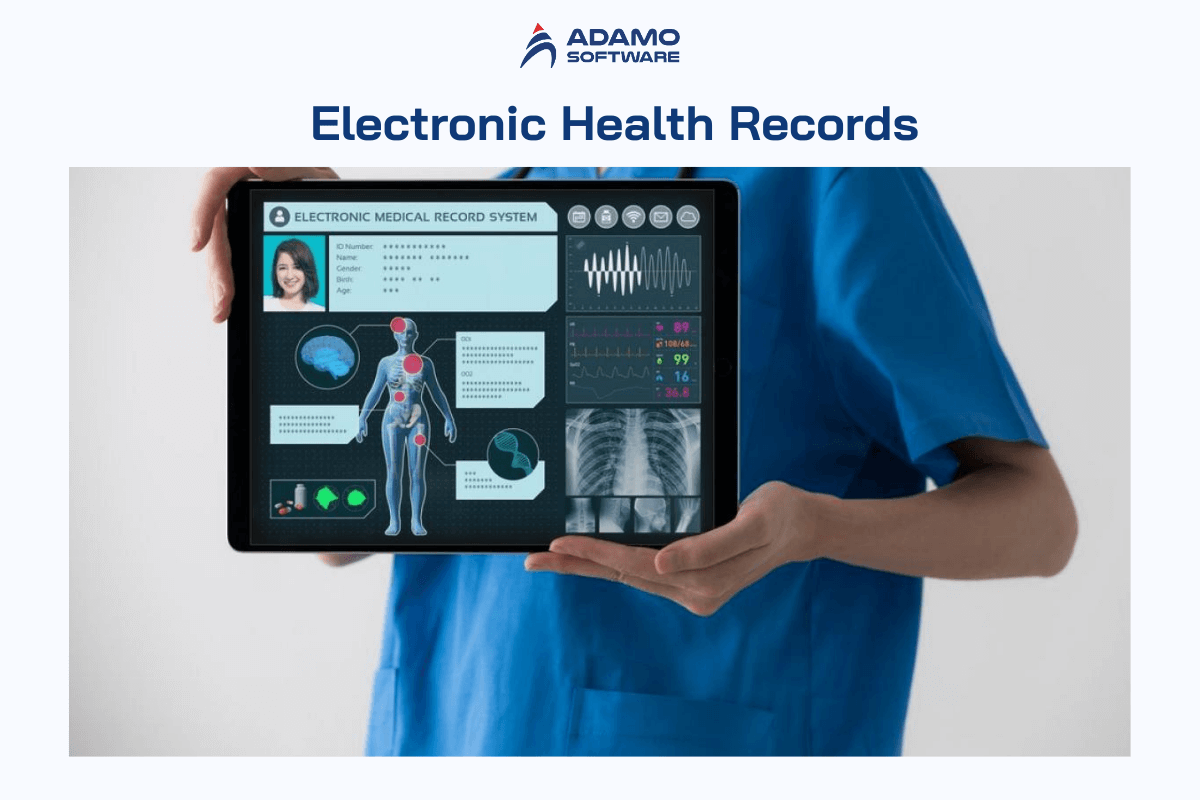
Electronic health records (EHR) represent the most common use of big data in healthcare. Every individual can have a comprehensive digital health record, containing important information such as demographics, medical history, and test results. Also, medical histories and diagnoses are stored in the EHR. The electronic records are accessible to both public health care providers and owners.
EHRs streamline healthcare processes by allowing doctors to make real-time updates without the need for traditional hard copies. At the same time, EHR also helps notify patients of scheduled tests and easily track prescriptions. Thanks to the integration of the EHR with big data analytic tools, you can predict disease outbreaks and inform public health strategies. Through EHR, the benefits of big data in healthcare, including reducing healthcare costs and improving patient outcomes, will be reinforced.
2. Early disease detection and prediction
Early disease detection and prediction are also among the big data use cases in healthcare. Leveraging advanced analytics and large datasets, you can detect threats to the patient’s health and diagnose the disease at an early stage. This is also one of the benefits of big data in healthcare. Thanks to the big data system that collects huge information, doctors can filter diseases, diagnose, and even suggest medications to help make treatment more accurate. Let’s see some examples of early disease detection and prediction as a big data use case in healthcare.
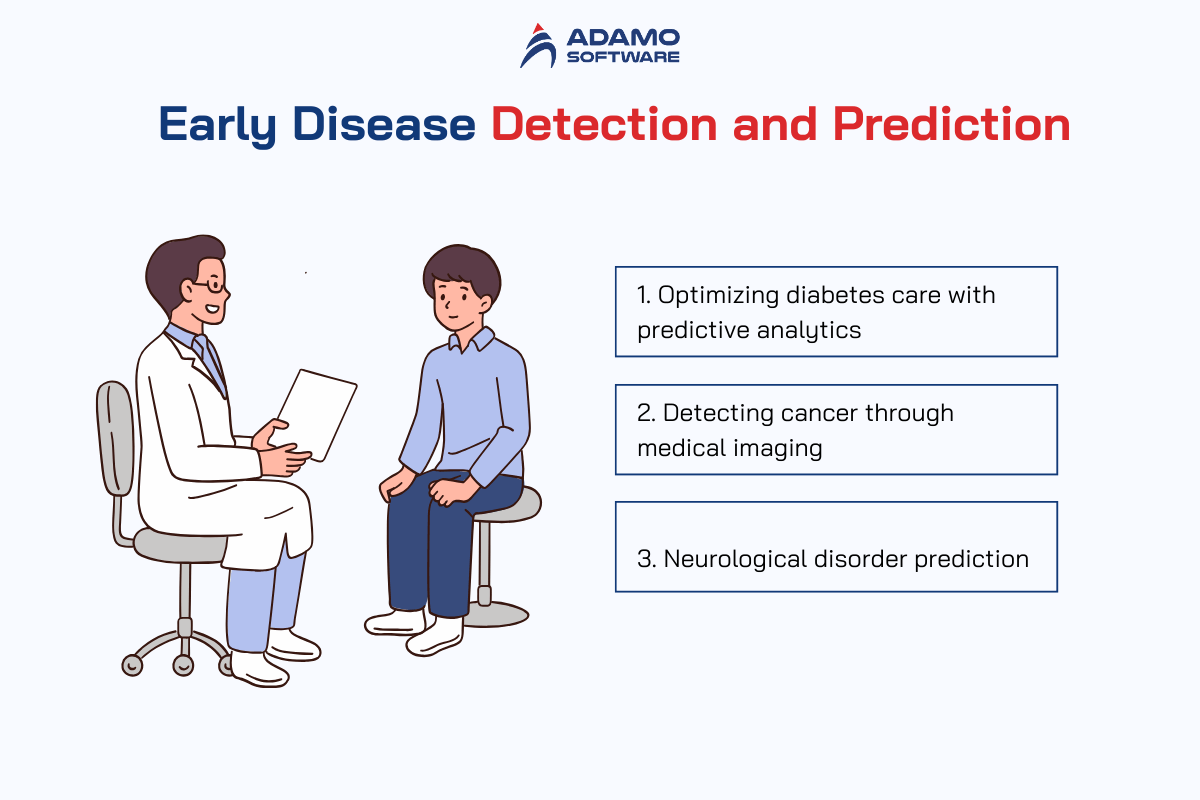
– Optimizing Diabetes Care with Predictive Analytics
Diabetes is a serious disease that more and more people are suffering from. Thanks to early detection and prediction through data collected related to the lifestyle, and genetic information of the patients, doctors can advise patients on preventive measures and lifestyle interventions to reduce the incidence of diabetes and related consequences.
– Detecting cancer through medical imaging
Images obtained from magnetic resonance can help doctors determine whether a patient has cancer or not. The collection of images and test results creates big data, and doctors will need to process it to reach conclusions.
– Neurological Disorder Prediction
Without data from psychological and neurological tests, doctors and psychologists cannot conclude the patient’s mental state. For example, based on data from neurological exams, imaging studies, and patient histories, doctors can predict Alzheimer’s disease, one of the neurological disorders.
Overall, these examples have showcased how big data analytics empowers early disease detection and prediction. Besides, they also offer a glimpse into the benefits of big data in healthcare, including improving the patient’s condition and enhancing community health.
3. Real-time alerting
Real-time alerting is also another example of big data in healthcare. Smart wearable devices have been utilized to provide immediate notifications about critical health events. These devices continuously collect patient health data and send this data to the cloud. From the data, artificial intelligence (AI) starts to analyze and give warnings of negative trends, abnormalities, and potential risks. This use case illustrates how the benefits of big data in healthcare can improve patient care and operational efficiency.
Smart wearable devices can monitor patients’ heart rate, blood pressure, and oxygen levels, which can issue warnings about diseases such as heart disease, stroke, and respiratory failure. preventative type of data-based approach can change our healthcare habits, helping us become more proactive in monitoring our health. Thanks to that, many diseases can be successfully and completely treated. Through smart wearable devices, doctors can access the database at each level to review the health status of the patient.
Additionally, healthcare facilities can come up with personalized care strategies with relevant information such as income, living area, etc. Several other diseases and conditions can be detected based on warnings from smart wearable devices. They are sepsis, fall detection, obesity, and diabetes, etc.
4. Big data analysis and medical images
As mentioned, big data helps to detect cancer through medical imaging. However, it is just one part of the big data analysis and medical images. Big data analytics applied to healthcare can help algorithms analyze hundreds of thousands of images. They automatically identify specific patterns in pixels and convert them into metrics to help doctors make a diagnosis. Here are some of the effects of the integration of big data with medical imaging.
– Enhancing diagnosis accuracy
– Analyzing images automatedly
– Predictive Analytics for Disease Progression:
– Improved Research and Development:
The benefits of big data in real life are vividly demonstrated in the analysis of medical images. Through algorithms, more images will be studied and recorded. Thanks to that, big data analytics has the potential to revolutionize medical imaging and create significant efficiencies in the healthcare system.
V. Benefits of Big Data in Healthcare
Using big data in healthcare has advantages for both patients and healthcare providers. The benefits of big data in healthcare are extremely profound. Big data empowers healthcare providers to deliver highly accurate diagnoses and provide personalized care plans for patients. Besides, big data allows hospitals and healthcare facilities to improve operational efficiency, reducing costs, etc. Let Adamo Software introduce you to each of the advantages.
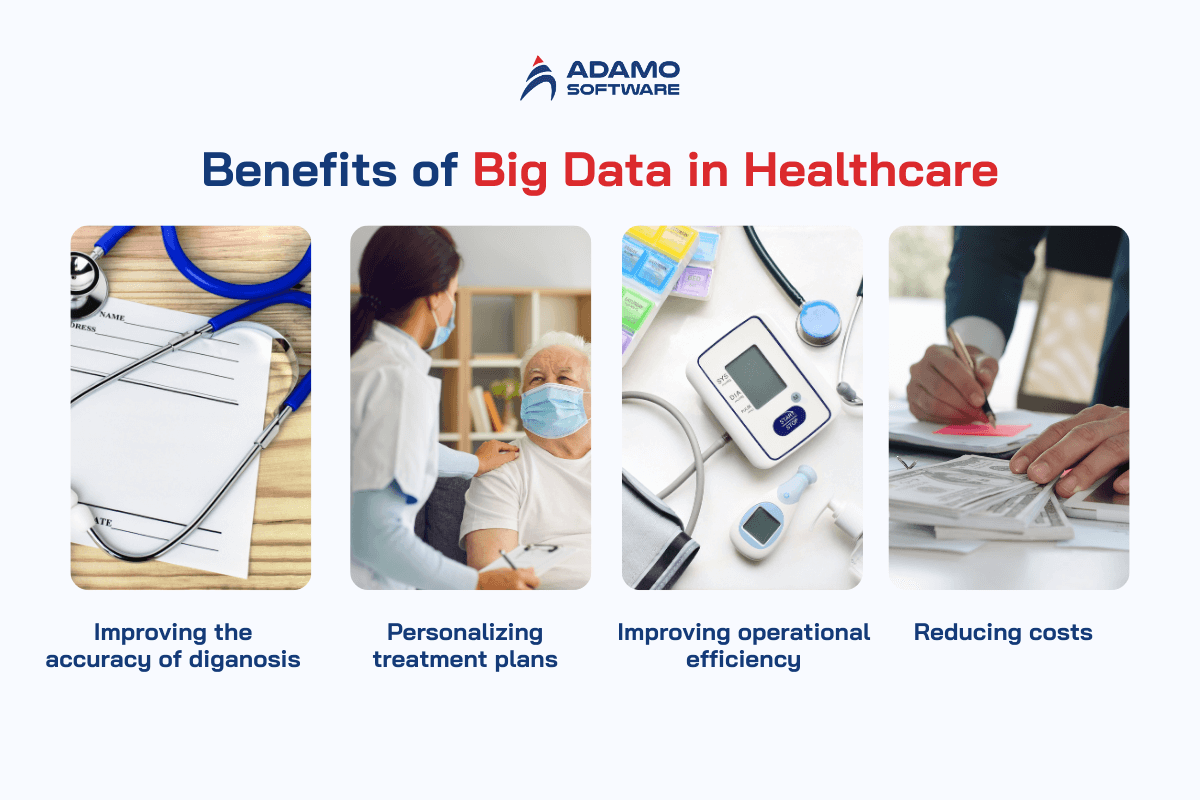
1. Improving the accuracy of diagnosis
Improving the accuracy of diagnosis is one of the benefits of big data in healthcare. While traditional diagnosis methods can sometimes miss important clues due to a lack of information, big data analytics can solve this problem. Thanks to a huge of data processed and analyzed, big data empowers earlier and more accurate diagnoses. The sooner the patients are diagnosed and treated, the better the chance of their recovery.
2. Personalizing treatment plans
Among the benefits of big data in healthcare, personalizing treatment plans is a notable advantage. As different patients have different lifestyles, genetic information, diseases, and responses to drugs, healthcare providers must have different treatment plans. Big data will help them with this. From the data collected, they can personalize medicine which can enhance the effectiveness of treatments.
3. Improving operational efficiency
Hospitals or healthcare facilities can improve operational efficiency with big data analytics. By effectively using data storage, hospitals can predict patient admission and optimize staff scheduling. Thanks to that, hospitals can proactively arrange staff, and ensure the right staff are in the right place at the right time, minimizing the waiting times while still providing timely care for patients.
4. Reducing costs
Reducing costs for operating is also among the benefits of big data in healthcare. Big data helps to cut down the unnecessary costs for staffing and inventory management. Thanks to the prediction of high-risk diseases from big data, costly emergencies, and hospital readmissions can be prevented. Besides, big data also contributes to eliminating redundant tests and procedures.
Besides these four main advantages, there are many benefits of big data in healthcare for healthcare providers, such as providing advanced research and innovation, improving patient engagement, and providing efficient patient data monitoring methods. Patients also directly benefit from these. Overall, by leveraging big data, healthcare providers can provide more qualified care for patients.
A look at how big data helps in healthcare industry
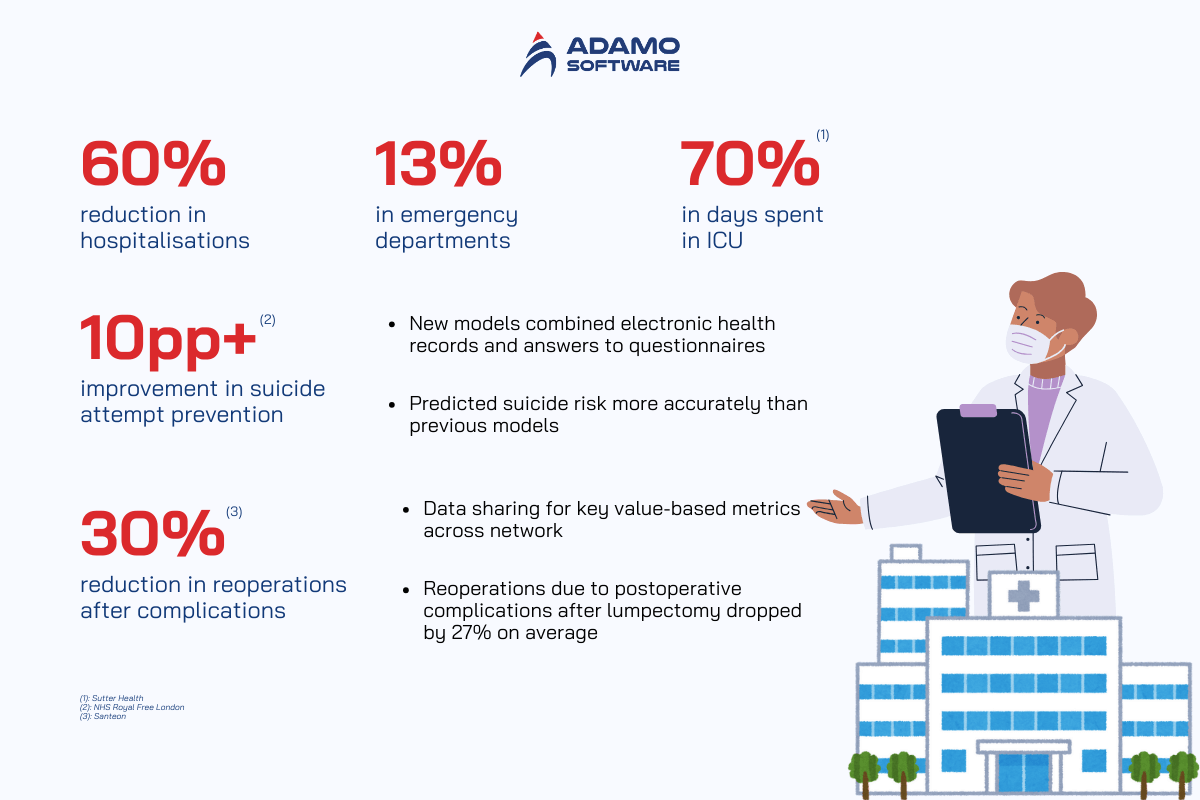
VI. Challenges of Using Big Data Analytics in Healthcare
Although there are many benefits of big data in healthcare, we need to pay attention to many things. The application of big data in the healthcare sector faces three main challenges below.
1. Data privacy and security
Data privacy and security are among of the challenges of using big data analytics in healthcare. You may want to manage well the vast amounts of sensitive patient information; otherwise, they will be leaked, and accessed unauthorizedly. The data leakage can lead to identity theft and loss of patient trust. Only when the patient data is fully protected will the benefits of big data be realized. It’s time to implement strong data encryption practices and security protocols to protect patient information.
2. Data calculation and storage capabilities
Without data storage capability, healthcare organizations may find it hard to leverage the benefits of big data in healthcare. As a large amount of healthcare data is produced daily, managing and storing this massive volume of data is needed. You may want to possess high-performance storage and robust computing capabilities for data management. If you don’t have enough computational power, the data processing and analysis will be slowed down. Therefore, it will be difficult for you to make timely and accurate clinical decisions.
3. Data quality and accuracy
Incomplete, inconsistent, or inaccurate data can lead to biased results and misleading conclusions affecting treatment decisions and patient outcomes. Besides, outdated information can also impact the relevance and usefulness of data analytics. To ensure the quality and accuracy of the data, you should prioritize data quality improvement initiatives and adopt standardized data practices.
In addition to the three challenges above, using big data in healthcare also has problems integrating information with existing systems, ethical and legal issues, high implementation costs, and technology availability and flexibility. By solving all these difficulties, healthcare providers can maximize the benefits of big data in healthcare.
VII. Final thoughts
Big data analytics offers unprecedented insights into patient care, operational efficiency, and medical research. To fully realize the benefits of big data in healthcare, healthcare organizations must approach robust data infrastructure, advanced analytics tools, and strong data governance.

Partnering with specialized healthcare software developers like Adamo Software creates the opportunity to integrate big data analytics into existing healthcare systems. With a team of experienced and professional experts, we are confident in providing impressive healthcare software solutions that enable optimum medical care and clinical outcomes. Telehealth/ telemedicine solutions, remote patient monitoring, on-demand healthcare solutions, and wearable medical devices, are valuable solutions that we offer.
So, if you are looking for a unit that can help you with healthcare software solutions, Adamo Software may be your choice. Visit our Healthcare Software Development web page for more detailed information. Contact us for a consultation.







